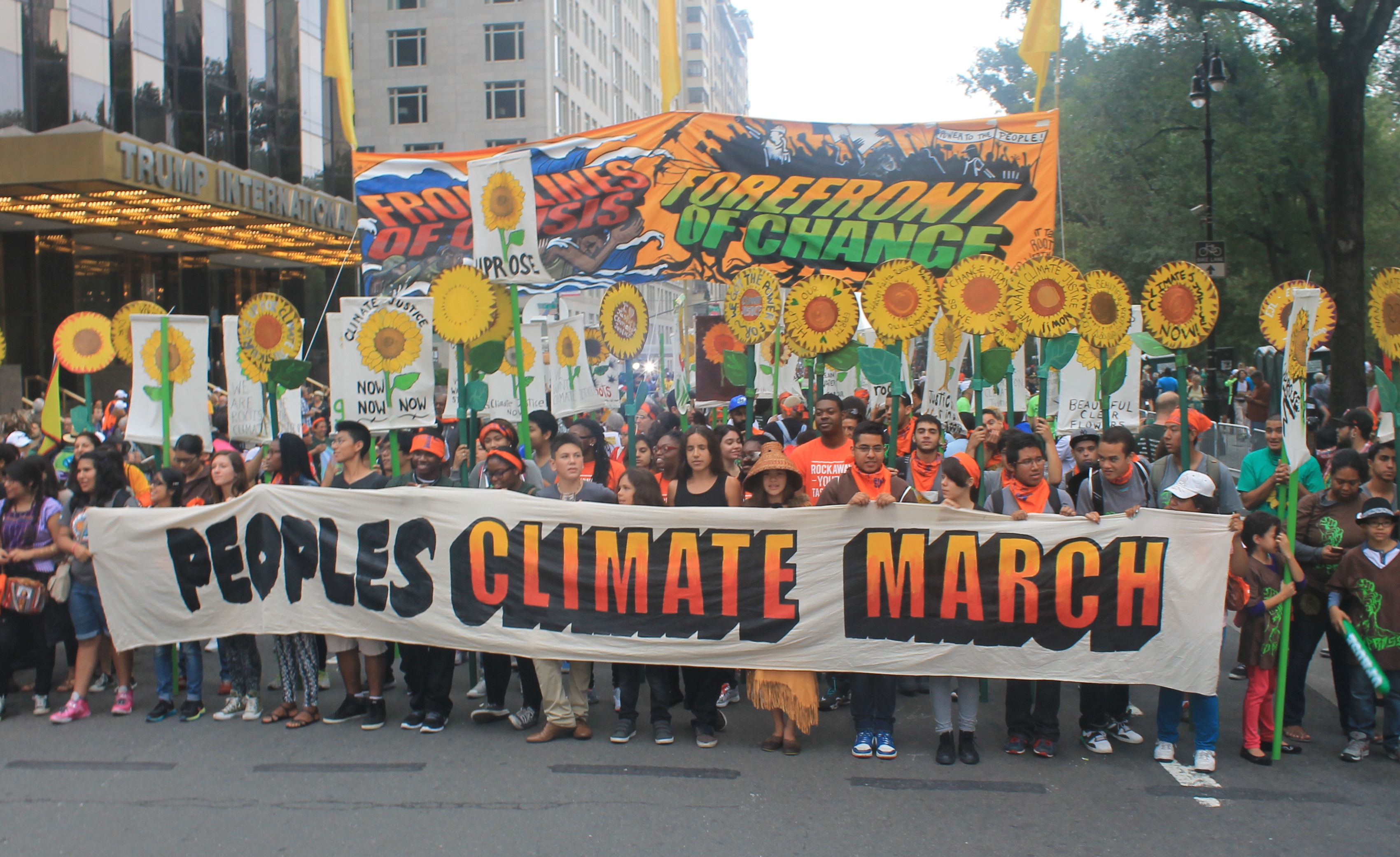Eighteen months ago saw the largest climate march in US history, as 40,000 people marched on the White House. Yesterday saw up to 10 times that number march on the UN climate summit demanding climate action.
This reflects the urgency of the climate crisis that is quite literally a matter of life and death. The destruction of all of earth’s species, the death of the oceans, carbon emissions pushing to a tipping point — all these are processes already under way, and as Naomi Klein explained at the climate convergence the night before the march, all we need to do for this to continue is nothing.
This threat is accelerated by increasingly extreme forms of extraction — deepwater drilling, mountaintop removal, fracking, tar sands and nuclear — that deliberately devastate the earth in order to extract toxic fuels.
This threat is not evenly distributed, but is sharpened by environmental racism. From Hurricane Katrina to Hurricane Sandy, the increasingly unnatural disasters are disproportionately affecting poor and racialized communities at home and abroad, those least responsible for the climate crisis.
The climate crisis is intertwined with the economic crisis, both originating from a common source. The same 1 per cent that is raising tides is also raising rents, tuition, debt, healthcare costs, and unemployment of the 99 per cent. But people are also rising.
The historic march in New York — and the 2,600 other actions across 150 countries that happened the same day — show that the global climate justice movement is rising, led by those most affected. The People’s Climate March was led by youth carrying the banner “Frontlines of crisis, Forefront of change”, followed by an Indigenous contingent with the banner “Respect Indigenous Peoples, End CO2lonialism.”
Solidarity with Indigenous peoples is growing alongside solidarity for migrants, who are challenging the climate disasters that displaced them and the exploitation they encounter in their new country.
While extraction industries thrive on pitting workers against the planet, the climate justice movement includes growing demands for green jobs and a just transition, so that workers can be part of building a health world.
While some on the march called on people to change their dietary habits or electoral choices, others were clear on the main threats to the planet and its people: corporations and the military, as this float carried by Veterans for Peace explained.
While Harper is boycotting the UN Climate Summit, hundreds from Canada joined the march, and thousands joined solidarity demonstrations across the country.
Participants from Canada marched in Indigenous, faith and anti-tar sands contingents — which marched against tar sands and pipelines, and for divestment and green energy.
While the threat of climate change is serious, the march was as festive as it was urgent. The climate crisis is also an opportunity. A better world is possible, but it will take system change to stop climate change.








